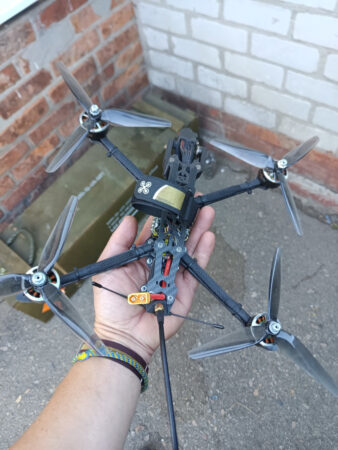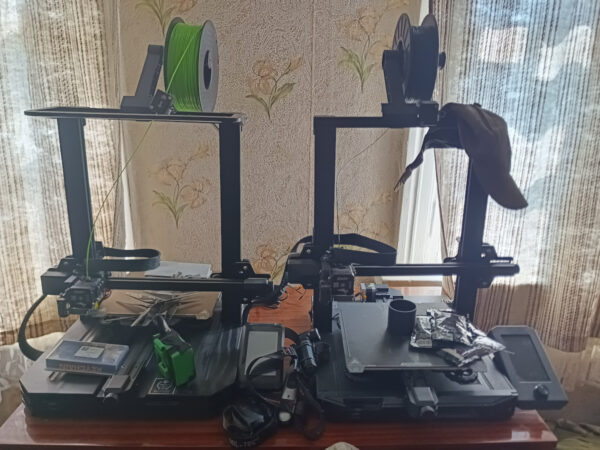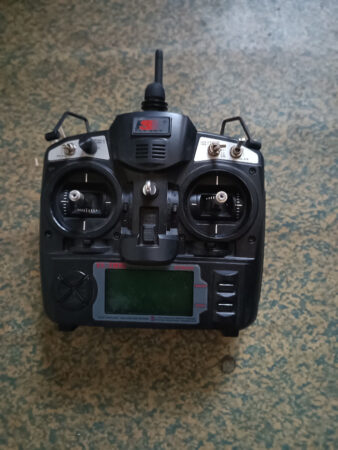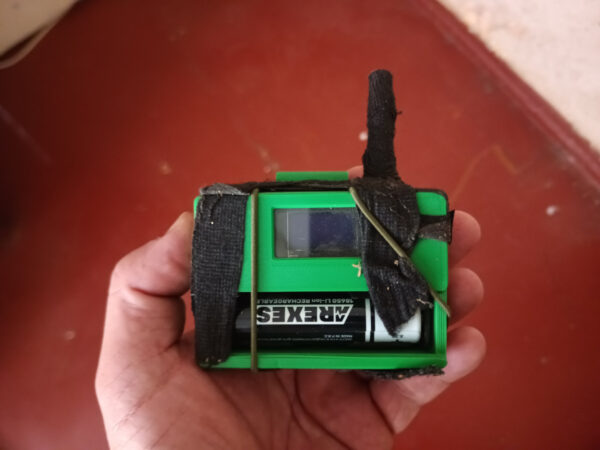Drones In The Ukraine [Live From The Front]
It’s not a stretch to say that we’re currently witnessing an inflection point in the history of warfare. Cheap, disposable unmanned aerial vehicles, or drones are having as much of an impact on this aspect of the human condition as the advent of the machine gun in the early 20th century, and no specialism be it infantry, armor, artillery or logistics has escaped their presence.
We can say that the US, with our military dominance of the battlespace, will be less affected by this change, and if we head down that route, it’s a mistake that we’ll pay for in lives.
Since I started covering the war in Ukraine from the front lines, one thing that’s been brought home in stark relief is the pace at which this area evolves, with both sides developing tactics, countermeasures, and technology at breakneck speed.
Of course, we’ve seen this many times before – better armor on tanks necessitated bigger guns to defeat it. Bigger guns and thicker armor need more powerful engines to move them. Darwin in action.
Here’s what I’m seeing now: Back in mid-2022, the Ukrainians gained a tactical advantage through the widespread employment of readily available commercial, off-the-shelf drones, such as the Chinese DJI Mavic 2 and 3. Initially used to spot for artillery and provide overwatch for Russian assaults, it wasn’t long before they became weaponized, armed with either VOG grenades or improvised free-fall bombs released from 3D-printed saddles.

Both sides are supposed to be covered by a sales embargo imposed by DJI and enforced by a no-fly zone embedded in their software, but this is circumvented by reprogramming or spoofing the drone’s GPS chip to make it believe it’s flying someplace else. DJI has since imposed sales restrictions in Europe to further frustrate Ukrainian efforts to acquire them, but as far as we know, no such conditions exist in Russia.
The Mavic 3 continues to provide reconnaisiance capabilities to both sides, but its use as a weapon has largely been supplanted by first person view (FPV) drones, as these are cheaper and more easily sourced locally.
Early 2023 saw the widespread Ukrainian use of FPVs armed with RPG7 HEAT warheads which proved to be effective in defeating armored vehicles, as they typically work in top-attack mode, where armor is thinnest.

For a while, The Ukrainians had the upper hand, as these drones of many different flavors and types were made in local workshops by commercial enterprises and the widespread civilian volunteer network which supports the armed forces.
Rather than use a dispersed approach to R&D and manufacture, Russia opted to choose one or two types, then place massive contracts with a limited number of defense companies and as a result, the numerical advantage enjoyed for a few months by Ukrainian forces disappeared.

There has been additional development by both sides in terms of the types of munitions carried by FPVs since then, and HE, Frag, HEAT and HEDP are part of the inventory. FPVs are much harder to fly than commercial drones, as they lack on-board stabilization, so their operators typically require a longer training period, starting on simulators and progressing to live flights once they’ve proven competence.
Counter Drone Warfare
Use of drones in combat is complicated due to the presence of countermeasures. Russians have long been experts in electronic warfare (EW), and have been quick to adapt this prowess to the new field. Drones typically use two radio channels; one for their video feed and the other for flight control.
Jam the video channel and the drone is blind, jam the command channel and it either crashes or hover in place until the battery dies. Of course, counter-countermeaures are in play, and these range from using signal amplifiers and directional antennae to punch through signal jamming, to the use of drone-carried signal repeaters to ‘hop’ the command and video channels.

Due to fielding of EW complexes down to the subunit level, the drone operators are now using a frequency analyzer to determine what, if any channels are being blocked, then program the drone to use an open channel.
Ukrainian forces currently have an advantage in that due to the wider variety of FPVs being built by their various cottage industries, they’re able to quickly adapt to jump on channels outside of the usual range used by COTS drones, and swap out antennae to take advantage of them. Prior experience suggests this advantage will be short-lived, and Russian forces will catch up sooner or later.
Presently, about 90% of infantry casualties in this conflict are caused by either artillery or FPV drones. We in the US must adapt our TTPs to account for the constantly changing world of drone warfare, or risk being left behind as our enemies watch and learn.

NEXT STEP: Download Your Free Target Pack from RECOIL
For years, RECOIL magazine has treated its readers to a full-size (sometimes full color!) shooting target tucked into each big issue. Now we’ve compiled over 50 of our most popular targets into this one digital PDF download. From handgun drills to AR-15 practice, these 50+ targets have you covered. Print off as many as you like (ammo not included).
Get your pack of 50 Print-at-Home targets when you subscribe to the RECOIL email newsletter. We’ll send you weekly updates on guns, gear, industry news, and special offers from leading manufacturers – your guide to the firearms lifestyle.
You want this. Trust Us.

Read the full article here


